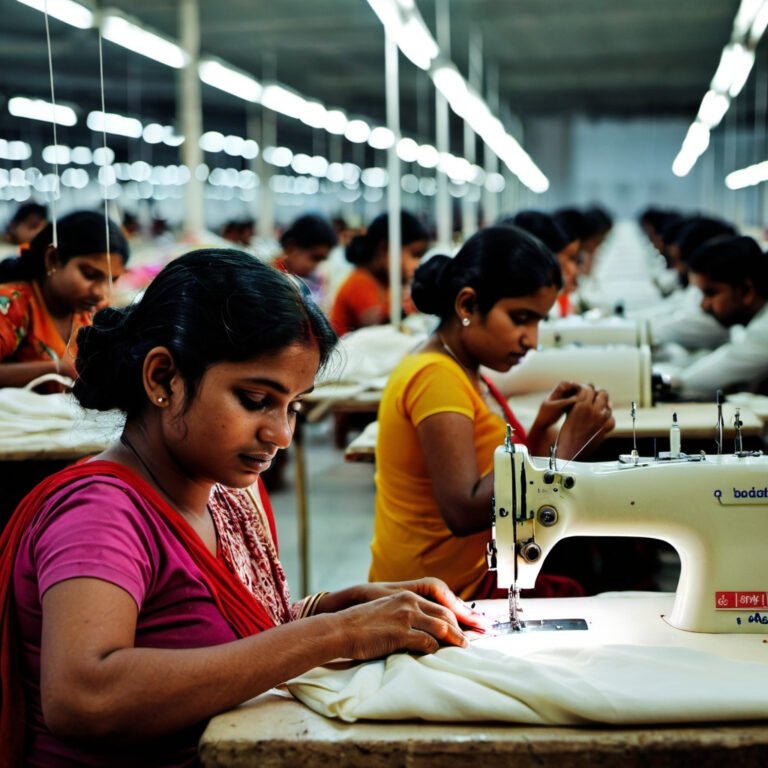In recent years, small-quantity manufacturing has rapidly gained traction worldwide, shifting the landscape of industries ranging from fashion to technology. This trend is more than a fleeting change—it’s a fundamental shift in consumer behavior and the way businesses operate in a global marketplace. The preference for personalized, custom-made, and fast-to-market products is becoming the new normal, especially in regions like Europe and North America. So, why are small quantity orders rising in popularity, and what should manufacturers do to keep up?
Changing Consumer Behavior: The Rise of Personalization
One of the key drivers behind the growing demand for small-quantity orders is the modern consumer’s desire for personalized goods. Gone are the days when mass-produced, one-size-fits-all products satisfied customers. Today, shoppers are seeking items that fit their personal tastes, designs, and preferences, leading to an increase in demand for unique, small-batch products. Whether it’s custom-designed clothing in their favorite colors, personalized gadgets, or tailored home décor, consumers now value individuality and exclusivity more than ever.
A prime example of this shift can be seen in the fashion industry. Brands like Zara and H&M, known for their fast fashion model, have further sped up production cycles to release new products weekly. Many brands now follow a “52 seasons” model, meaning they launch new products almost every week of the year to keep up with the demand for variety and novelty. Consumers are attracted to these fresh, on-trend items, which are often available in limited quantities to promote a sense of exclusivity.
This trend is not just limited to clothing. In sectors like consumer electronics, customers are opting for custom-fitted gadgets and accessories, choosing products tailored to their specific needs and preferences. For instance, many people prefer to order unique phone cases or limited-edition tech accessories, as opposed to standardized models.
Digital Marketplaces: A New Era for Brands
With the rise of eCommerce and social media platforms, brands now have direct access to their consumers, allowing them to better understand customer preferences and respond more quickly to trends. Instagram, Facebook, and LinkedIn have become crucial spaces where brands engage with customers and promote new, custom-designed offerings. This interaction has only accelerated the demand for smaller, more personalized product lines.
Companies like Nike and Adidas have embraced this shift by offering customization options on their websites, allowing customers to design their own shoes with preferred color combinations and patterns. This concept of “made-to-order” or “just-in-time” manufacturing has spread rapidly, forcing companies to rethink their production models. In the U.S. alone, over 350 small-order manufacturing factories have opened in the last three years to keep up with this demand, employing more than 96,000 people in small-quantity operations.
The Global Proliferation of Small-Order Factories
The growth of small-order manufacturing isn’t limited to the U.S. and Europe. It has become a global trend, with countries like China and Bangladesh slowly adapting to the rise of smaller, more agile production facilities. These factories focus on speed, quality, and customization, catering to niche markets rather than relying on massive bulk orders.
In the U.S., the number of small-order factories has grown significantly. Between 2019 and 2022, more than 350 small-scale manufacturing units opened across the country, catering to clients who prefer smaller, more customized production runs. These factories can produce smaller orders with quicker turnaround times, which are becoming increasingly vital for brands competing in fast-paced digital markets.
Companies like Printful, a U.S.-based on-demand printing service, have capitalized on the need for small quantity production. It allows businesses and individuals to create customized clothing and accessories, with no minimum order quantity, and get them shipped worldwide. Such platforms are pivotal in supporting small businesses and entrepreneurs who can’t afford to place large bulk orders.
Challenges for Traditional Factories in Emerging Markets
While this shift towards small quantities is thriving in developed nations, many manufacturers in developing countries are struggling to keep pace. Countries like Bangladesh, which have traditionally relied on large-scale garment manufacturing for big retail brands, are now feeling the pressure of this new market dynamic.
The problem lies in these factories’ inability to adapt to smaller orders, which are more complex to manage logistically and financially. Big orders allow for economies of scale, reducing costs by producing in bulk. However, when a factory receives multiple small orders with specific requirements (such as different sizes, colors, or designs), it becomes more difficult to maintain efficiency without reconfiguring entire production lines. Moreover, when the cost of materials like yarn suddenly increases, manufacturers have no leverage to negotiate better prices, as they don’t control a significant portion of the global market.
Many large factories in Bangladesh have had to shut down due to their inability to meet the demands of small-quantity orders. According to industry reports, over 1,100 export-oriented factories are operating in Bangladesh today, but many are on the brink of closure. This is not only due to decreased orders but also because these businesses have failed to keep up with technological advancements, new production models, and the rise of small-order management practices.
Learning from Industry Leaders
Brands that have successfully adapted to the demand for smaller, quicker, and more personalized orders provide valuable lessons for manufacturers. They have embraced automation, flexible manufacturing, and direct-to-consumer (DTC) business models, all of which reduce dependence on bulk orders.
For instance, Indochino, a Canadian menswear brand, offers made-to-measure suits online, which customers can fully customize in terms of fit, fabric, and style. Instead of stocking massive inventories, Indochino manufactures suits on demand, reducing waste and ensuring customer satisfaction. This approach is gaining traction because it allows businesses to cater to specific consumer preferences without being bogged down by unsold inventory.
The Path Forward for Global Manufacturers
The global demand for small-quantity manufacturing is not a passing trend but a fundamental shift in consumer behavior and business strategy. To survive and thrive, manufacturers in developing countries must embrace this new model by investing in technology, adopting flexible production lines, and building smaller, more agile factories. By doing so, they can stay competitive and meet the growing demand for customized, quick-to-market products.
In conclusion, as small-quantity manufacturing continues to grow in popularity across the world, businesses must adapt their production strategies, or they risk being left behind. The future of manufacturing will be defined by those who can successfully blend efficiency, agility, and customization to meet the needs of a new era of consumers.
References
- “Why Small Quantity Manufacturing is Taking Over,” Fashion United, 2023.
- “The Rise of On-Demand Manufacturing in the U.S.,” Business Insider, 2023.
- “How Customization Became the Norm in Fashion,” The New York Times, 2023.
- Printful case study, 2022.
- Indochino’s DTC Business Model, 2023.




